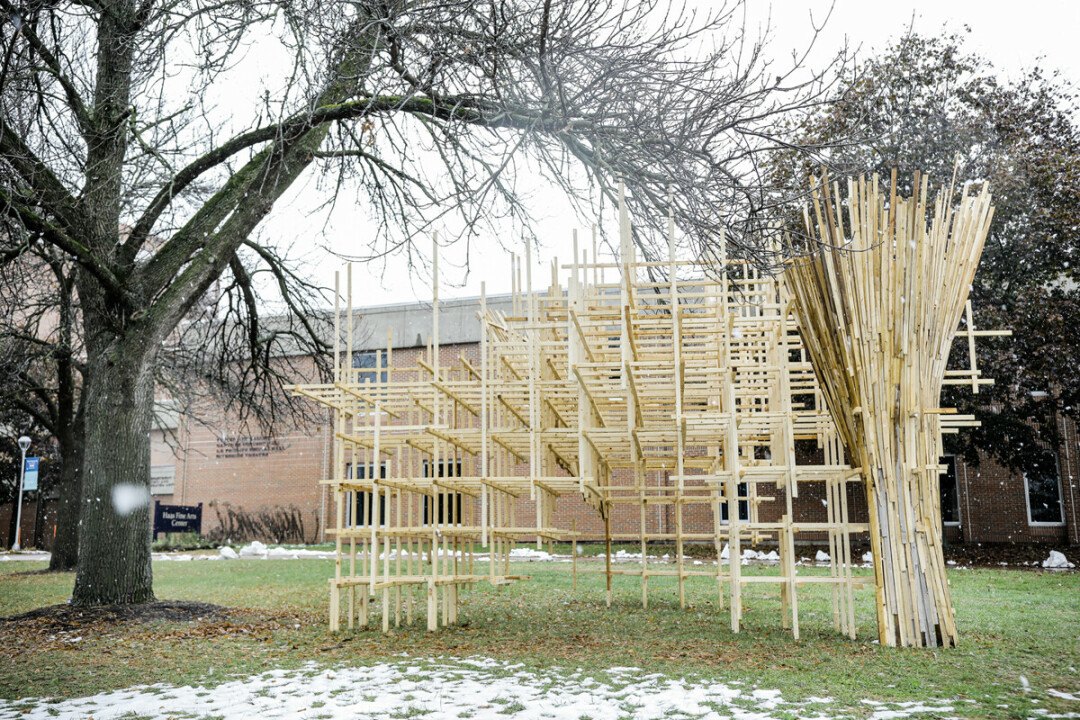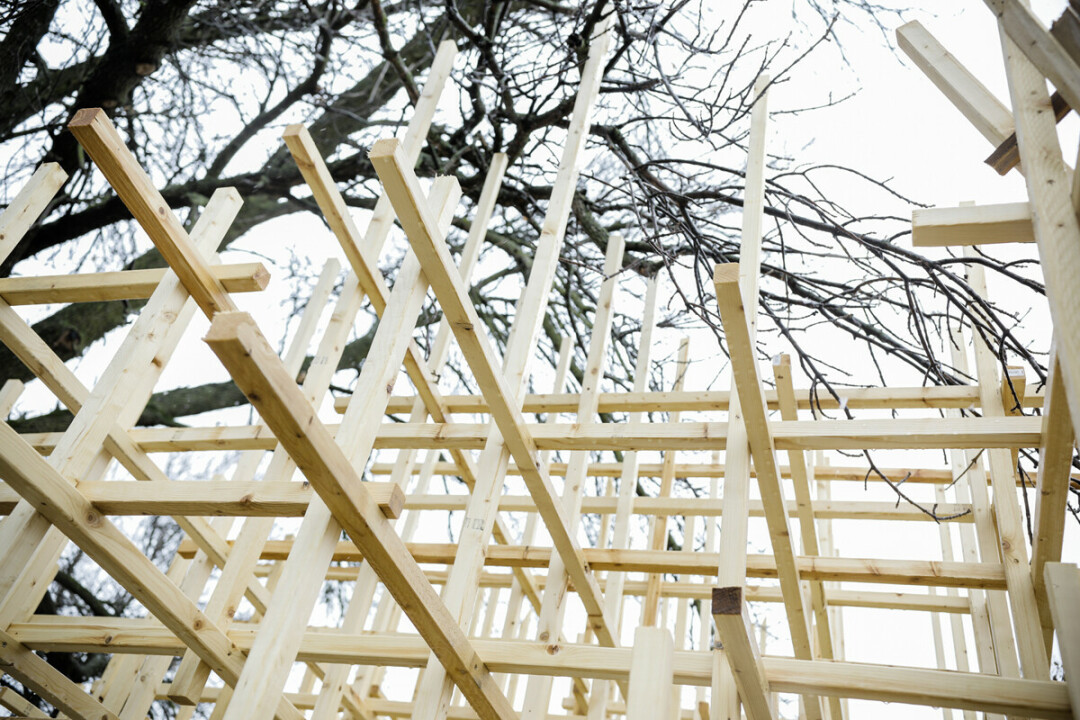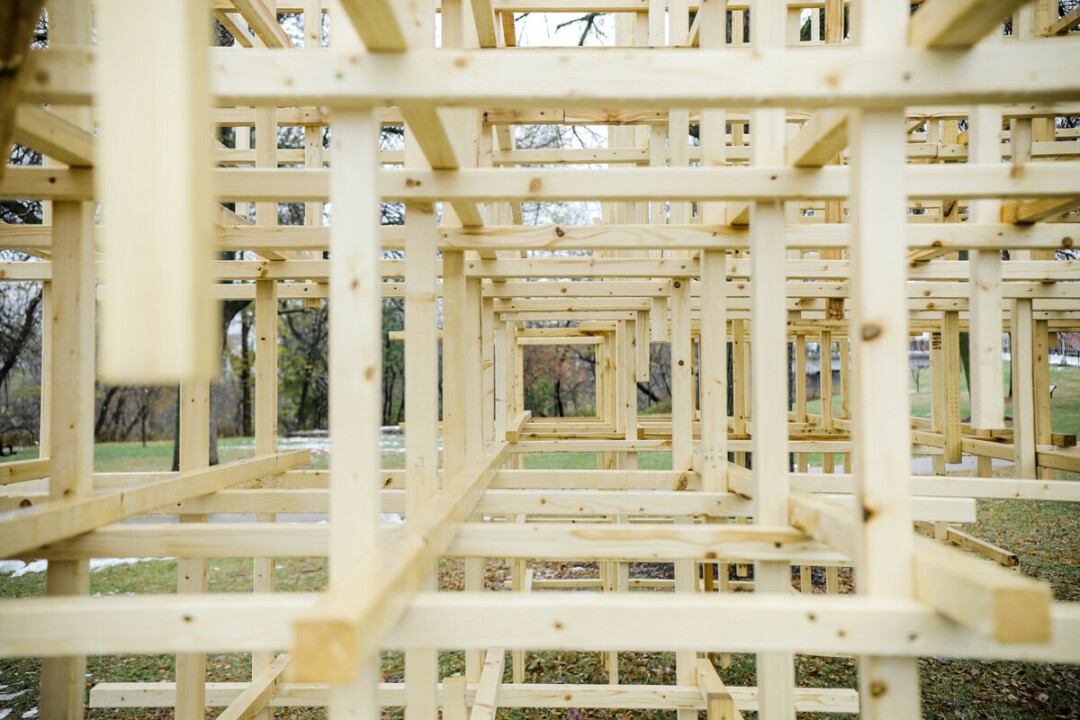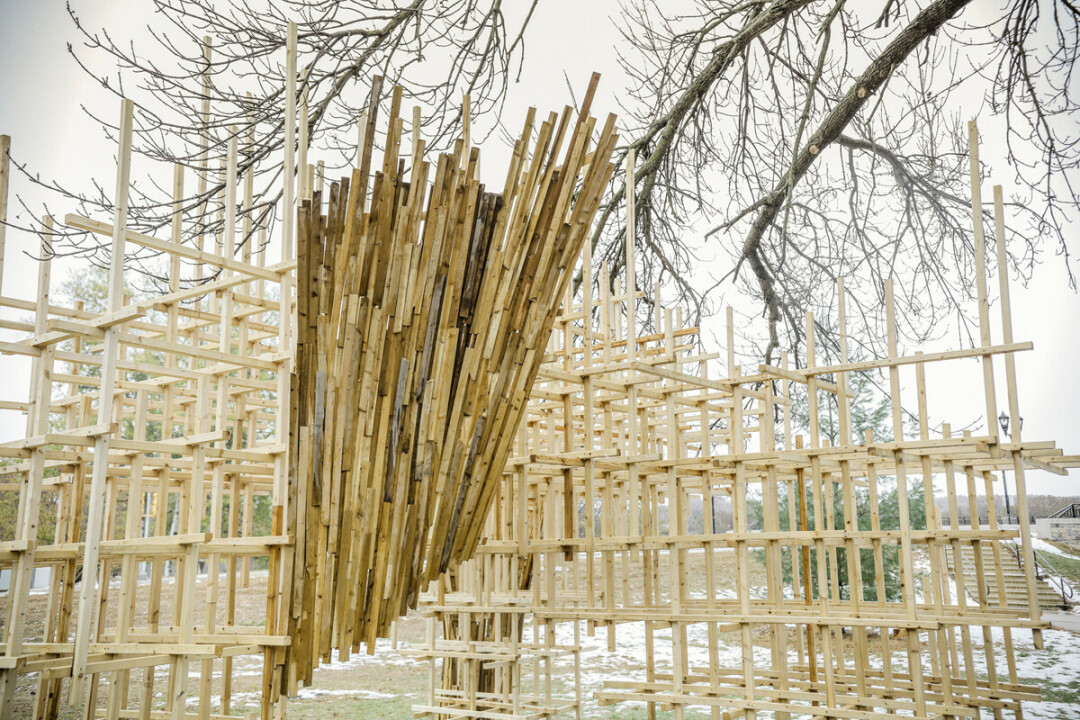‘The Nature of Our Disposition’: Student-Curated Exhibition Explores Climate Change
Foster Gallery show combines themes of sustainability and art to provide new insights
Rebecca Mennecke, photos by Andrea Paulseth |

If you’ve recently noticed a quirky, angular wood structure outside of Haas Fine Arts center at UW-Eau Claire, you’re not alone. “Untitled (Epithelium II),” created by Wisconsin-based artist Peter Krsko, is a part of The Foster Gallery’s first student-curated exhibition, “The Nature of Our Disposition,” which explores the relationship between art and sustainability – and it’s turned a lot of heads.
”
This is what young people are born into, and it seems like this inevitable thing.
Caleb carr
student curator of "The Nature of Our disposition"
“I was thinking about – as a young person – growing up in this world and knowing about the climate crisis, and it’s happening,” said Caleb Carr, a fourth-year art student and curator of the exhibition. “And it’s been happening for my entire life. And it felt like a disposition – like, this is what young people are born into, and it seems like this inevitable thing that’s coming.”
Krsko – who is one of five regional and international artists featured in the gallery, including Adriana Barrios, Gregory Euclide, Nick Brandt, and Steve McPherson – based his unique structure on the relationship humans have with nature. "Epithelium" is a scientific word that refers to skin, Krsko said.
“The skin is an organ that separates us from the rest of the world,” he said, “but if you look closer, you actually realize that it’s very permeable, and a lot of things can really flow through – like small molecules, water, even viruses and some microbes. And it creates more like this quasi- or blurry boundary between what we consider us humans and the rest of nature outside of our body.”

“Untitled (Epithelium II)” is a part of a gridlock series, according to Krsko – who has a doctorate degree in biophysics and material science from Stevens Institute of Technology in Hoboken, New Jersey – that seeks to create large public art that is impactful but uses a minimal amount of materials, or materials that can be recycled or repurposed.
In Krsko’s experience as a public artist, scientist, and educator, he has found that public art creates better community cohesion and better public spaces – which leads to improved public health, education, and safer neighborhoods. It’s also an opportunity to spread joy – a rarity in the field of climate science.
There is more power in having a positive approach.
Peter Krsko
Artist
“There is more power in having a positive approach than always complaining and pointing out the catastrophic scenarios,” Krsko said. “Sometimes it’s OK to step back and say, ‘OK, well, it’s not perfect, but maybe it’s better than it used to be.’ And we should just keep going and make it better, look for new solutions to our problems, instead of just being focused on our problems.”
Carr sought out diverse media for the exhibition, which is on display to students until Nov. 11. With every step, he sought to ensure sustainable practices. For example, Brandt – a photographer featured in the show – exhibits enormous photographs (about four to six feet in length), which he wanted to mount using aluminum. But, after careful consideration, Carr used a combination of magnets and screws, which are more reusable, to showcase the artist’s work. Carr also used old pamphlets from the Foster Gallery to create his own recycled paper to make the letters spelling out the title of his show.

According to Interim Gallery Director Amanda Bulger, the process to become the first student to curate an exhibition was a lengthy one. Carr worked with Bulger to write a proposal, which the gallery committee later endorsed. Carr then worked with faculty mentors Ned Gannon (Art and Design) and David Tschida (Communication and Journalism), wrote a summer research grant to be able to contact artists for the show, design promotional materials, and consider the layout.
“The goal of the exhibition is to offer an insight into ideas about climate change that maybe are more visually appealing and require viewers to think a little bit more about what they’re seeing,” Bulger said. “I think sometimes when we talk about climate change, we have scientists who are giving us information, or we have people who are not scientists who just look at the fact that we got seven inches of snow earlier this week, and they say, ‘See? Climate change is real!’ But with this show, it gives us a whole new lens of looking at the topic. And what I think happens is that we approach the idea with a little more empathy.”

“The Nature of Our Disposition” will be open to students through Nov. 11. Due to COVID-19, the gallery is closed to community visitors, so there will be a video of the exhibit at The Foster Gallery’s website. Carr also worked on a student-based exhibition, titled “Our House is on Fire,” which culminates student work from all across the UW System. Both “The Nature of Our Disposition” and “Our House is on Fire” will be available for community viewing at thenatureofourdisposition.weebly.com.




















